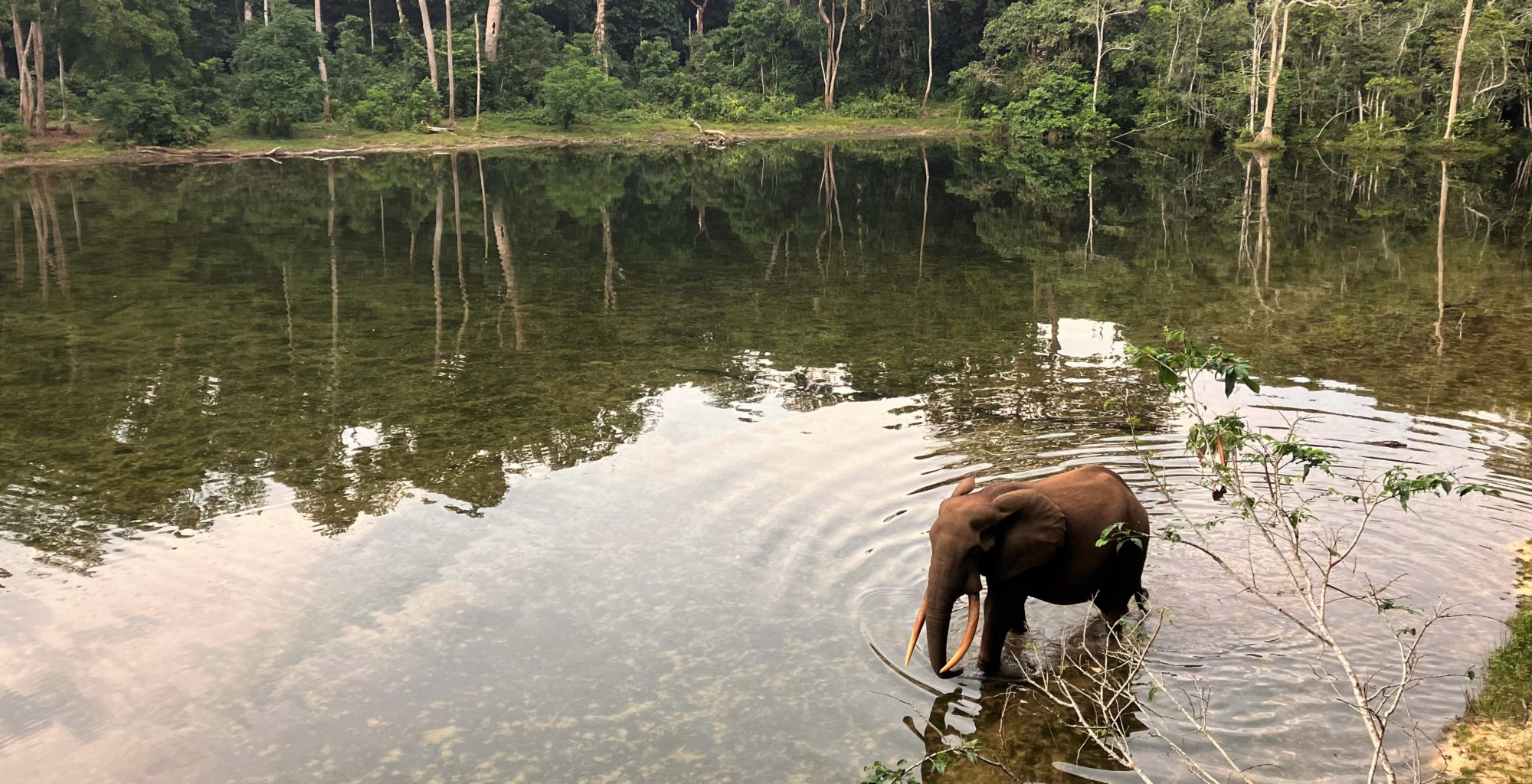Last month, Will Jones travelled to the Republic of Congo’s Nouabalé-Ndoki National Park. Here he shares the mind-blowing beauty of the forest, the behaviour of some of its animals, and the fact that the trip is a travel prototype for what comes next.
Rare | Republic of the Congo
Sitting by the waters
a place OF TREES
As we glide across the surface of the Mbeli Creek deep in the heart of Nouabalé-Ndoki National Park of the northern Republic of Congo, I am reminded of the lines of a poem I wrote when young. It was titled ‘Life’: ‘Sitting by the waters of a distant jungle stream / where life abounds in glory and the mind comes alive like a dream. / I realise now, as rich thoughts stretch for more, / that in these lives lain before us there are myriads to yet explore’.
My apologies for repeating it here. I’m fully aware that it would need a good editor were it to be put up for publication. However, that’s not the point. I enjoy my young self and I like even better that its future self — now a husband, a father, in middle age, with years of experience under its belt — still feels exactly the same, especially when in Ndoki, which must be one of the purest parts of the natural world I’ve ever had the good fortune to visit.
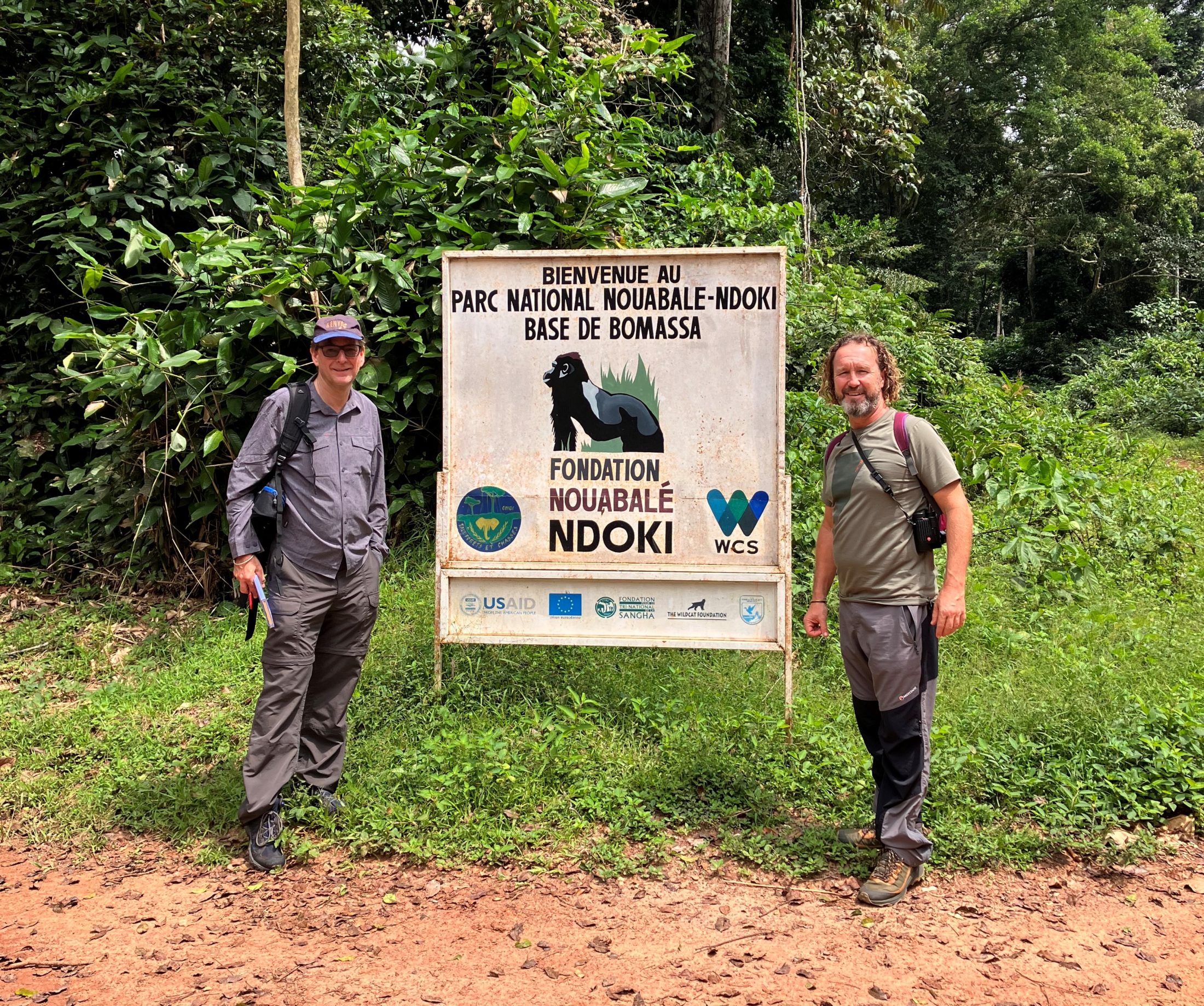
Nouabalé-Ndoki is a myriad of winding elephant paths, crystal streams and hidden ‘bais’ which represent and encompass our true search for original adventure, experiences that in the broader safari landscape are ever so slowly losing their originality. Together with the Financial Times’s David Pilling, I am, as shared elsewhere, in the biggest rainforest after the Amazon, in a park of 4,000 sq km, which in turn is part of a 12,000 sq km tri-national reserve spanning the Republic of Congo, Central African Republic and Cameroon, and which possesses no formal tourism infrastructure to date.
This is a place of trees and we work our way through them and around them, on foot and by boat, between the roots, and under their sheltered canopy. It’s a place that hasn’t been commodified or commercialised by the ever-rising tide of visitors. It’s where Google struggles. It’s a one-star destination from Tripadvisor. It’s the entire park to ourselves, in the fine and expert company of the Wildlife Conservation Society, the conservation agency that manages it beautifully. It’s where the originality of exploration abounds: we are here before the first visitors. It’s rare access only.
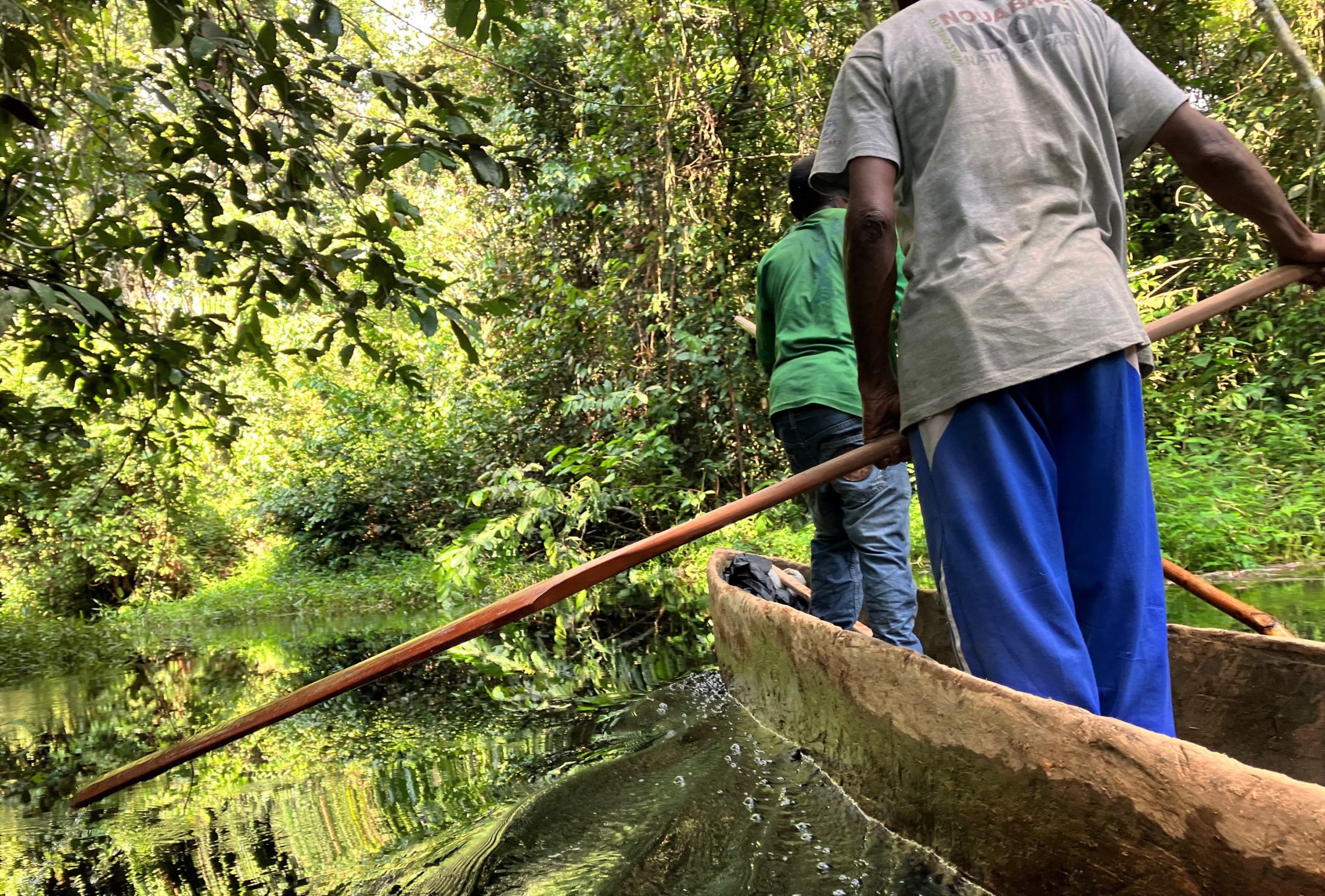

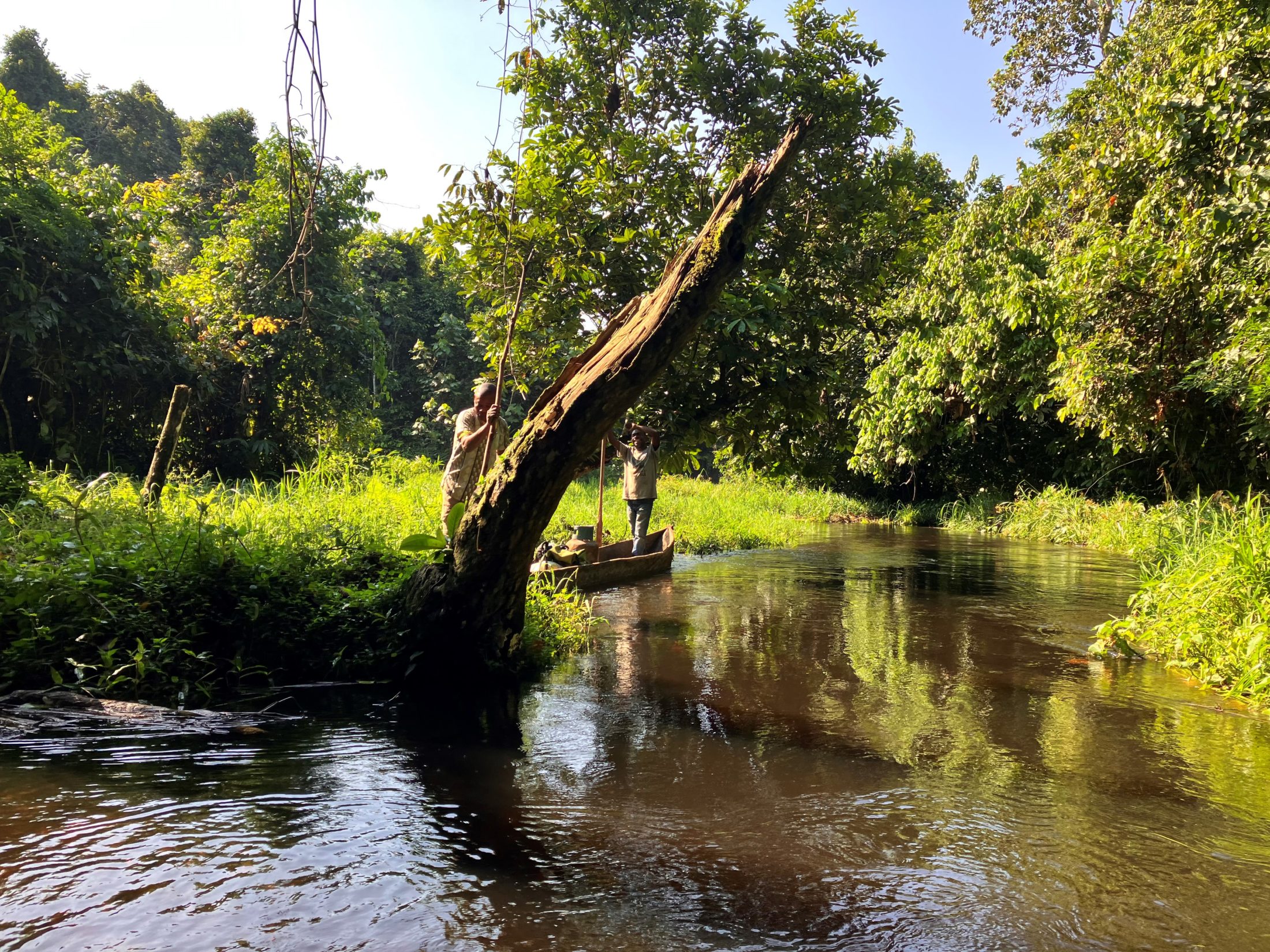
This will inevitably change. We are visiting in November 2022, before any formal tourism infrastructure. The excellent Congo Conservation Company has an option for the setting up of a tourist concession here and is scheduled to break ground in early 2023 when they will build two upmarket camps at Mombongo and Mokele. It will be interesting to see how this affects the dynamics of the ‘gorilla triangle’ journey and the push and pull between Odzala to the south, Ndoki, and Sangha across the border.
Bais, architects and avatars
The park is divided into numerous areas, both protected and logged. Much of our time is in fact spent outside the park. The forest crosses all boundaries and feels otherwise consistent to the untrained eye, except for open clearings or ‘bais’, cleared by elephant that maintain the openings in order to access salts and minerals beneath the ground. The word ‘bai’ is a local Ba’aka word, meaning ‘forest clearing with water’.
The architects of the forest, the elephant, ensure the paths remain open and the clearings cleared. Without them, we wouldn’t be here. We follow their paths and on their terms. Without the elephant, the broader park ecosystem would be knocked out of balance. Elephant is a cornerstone species. We didn’t see elephant in the forest, only in the bais.

You are left in no doubt that nature rules here. You are here as its guest. Walking through the forest, you are utterly immersed in nature — it pervades your very being. The walks are quite literally forest therapy as nature washes across our thoughts and runs through the neural pathways of our brains. Buttress roots reach out to you, bright red creeks glow in dappled light from the tannins of decaying leaves, de Brazza monkeys flit through the canopy. It has an avatar quality.
In my other lives, there is no garden of Eden. The Anthropocene has breached the garden’s walls. The Age of Man has flipped so much of our perspective about our relationship with the forest. For all preceding geological epochs, humans were part of and determined by nature. Today, we have seen fit to put ourselves at its top, thinking to supplant nature, which we once served. Nature, we say, now serves us, and with that saying so we’ve lost that magical — raw, surprising, beautiful — relationship we once had with it. But here, in Ndoki, the Anthropocene still feels a distant and uncertain future. Nature in all its complexity remains firmly in charge: ask not, it seems to say, what we expect of it, but what it expects of us.
walking the green
We spent five nights at Nouabalé-Ndoki in all. The itinerary itself involved a first night in the park headquarters, Bomassa, to start and a beer by the river with a local dance troupe. The experience felt rewarding for both parties. We then walked to Wali Bai (1 hour) for our second night, sleeping on the deck overlooking the bai, which was magical. We then drove and walked to Jeki for the start of a two-hour 10km walk to the research station of Mondika, the base for gorilla habituation, where we would stay for night three.
Having walked back to Jeki and driven to Mbeli Port for a pirogue ride along the waterways and channels to Mbeli Research camp, we walked another hour to Mbeli bai for our fourth night, this time on a near-derelict platform, which does need urgent maintenance. We ended with a walk and ride back to Bomassa to round out this wonderful journey. If anything, and I had more time, I would add a second night at Mondika — the on-deck sleeps are an extraordinarily positive imprint on the mind.
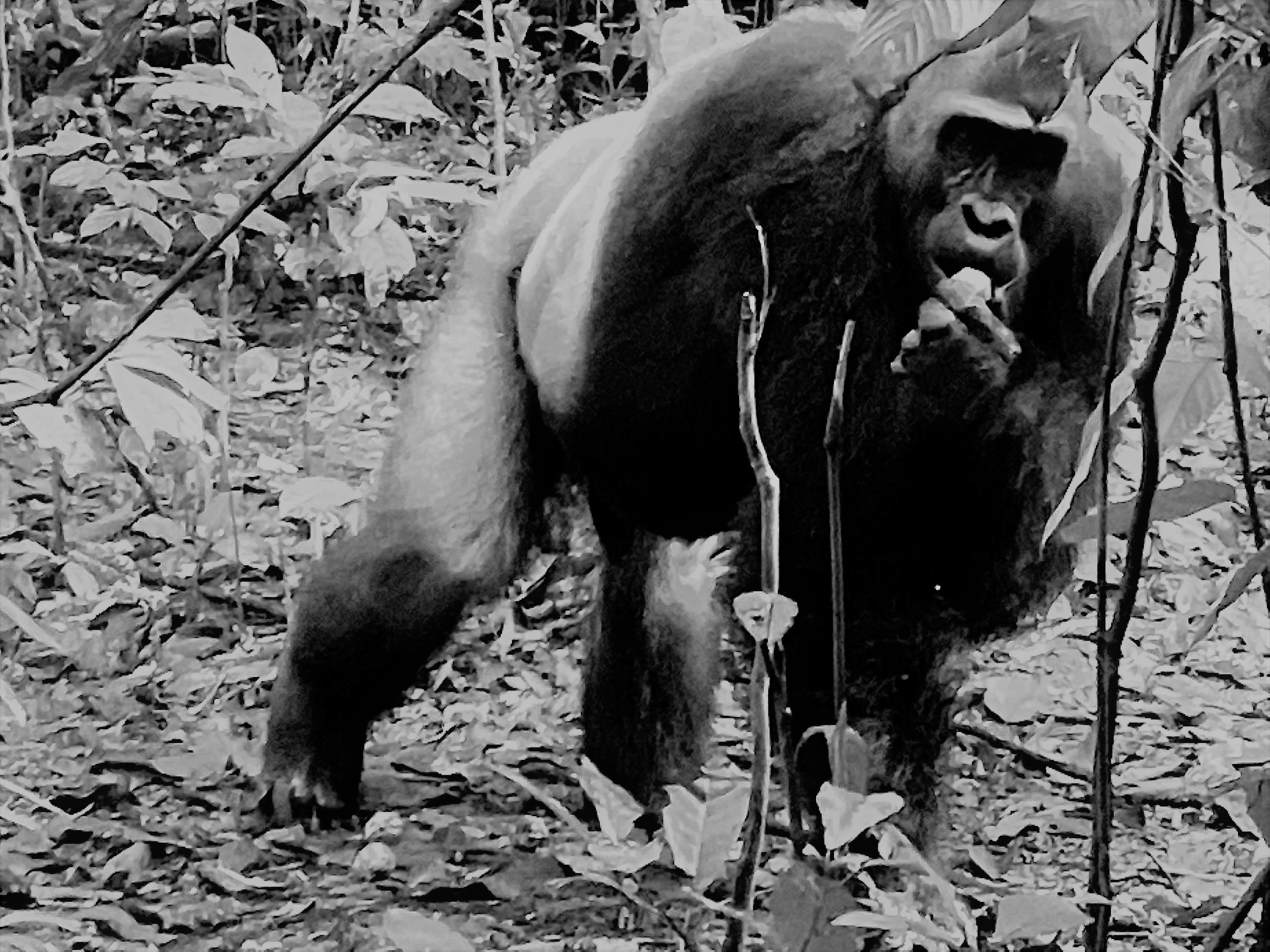

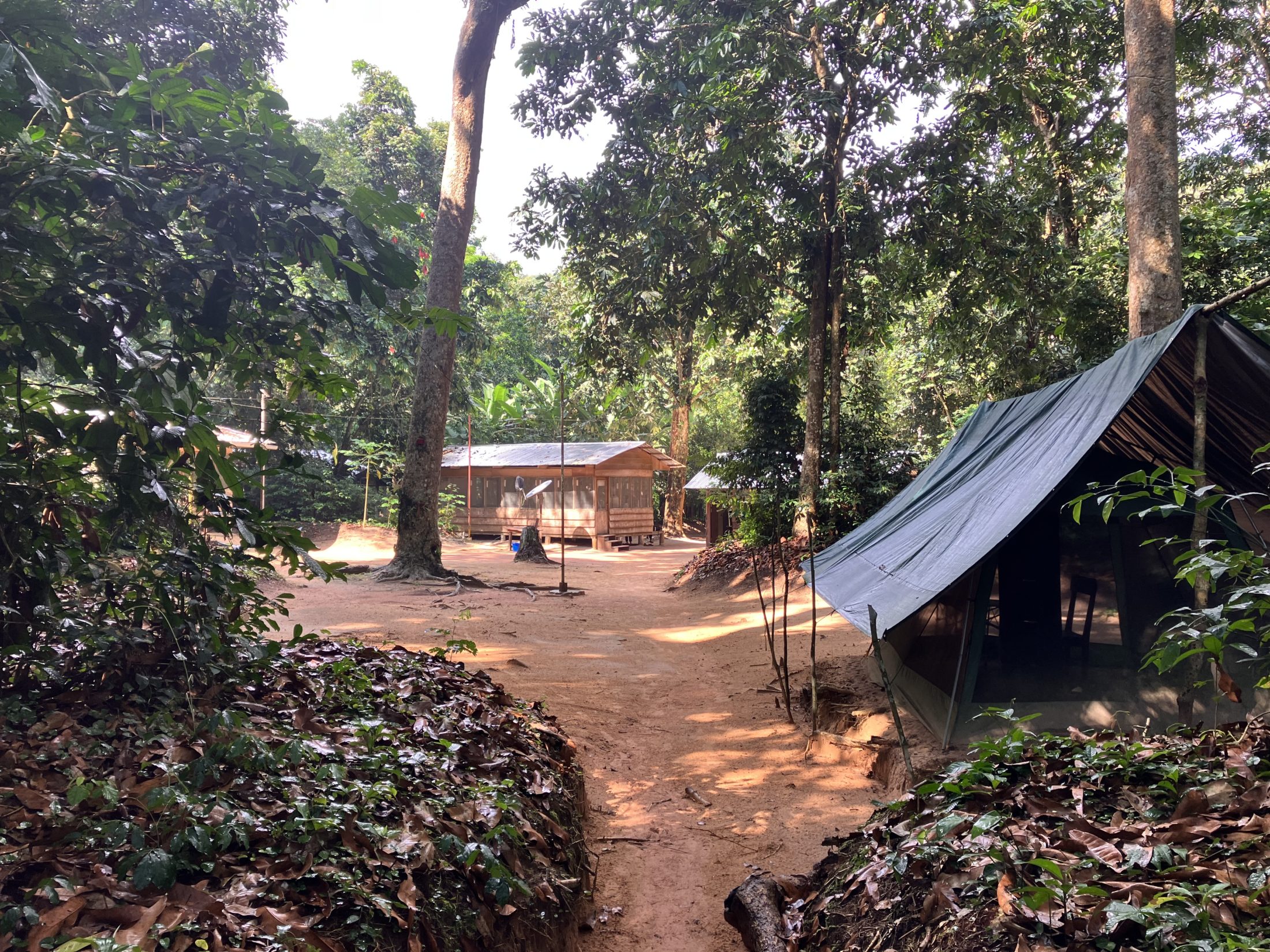
On glory and dreaming
As a volunteer in Ethiopian parks, I once wrote an apocalyptic story about a forest overcome by decay. ‘Nefas be Abuarra’ meant ‘wind with sand’, and it strikes at the heart of our anxieties about the long-term projection of humanity. Even in this vast ‘dry’ lowland forest – which is at first glance, as said, as far from the ‘age of man’ as it is possible to get — there are signals warning of change. The forest is affected by logging and environmental change. The forest is not free and temperatures are rising. The first forest fires have begun, and the Ba’aka do not know how to process this new phenomenon.
But in the immediate moment, sat beside the water, I couldn’t be happier. To get here, I’ve ridden shotgun in the back of an old land cruiser, bounced barefoot through the forest, slept out under the canopy, and enjoyed the company of three people for whom this land of trees is home. It’s been tough: I smell, I’m barefoot and a little dirty. I dive into the distant stream and emerge, fresh and laughing. Life does, after all, abound in glory; and in this place, by the water, my mind most certainly comes alive, as if in a dream.
Thank you to everyone who made this possible. We will be back.
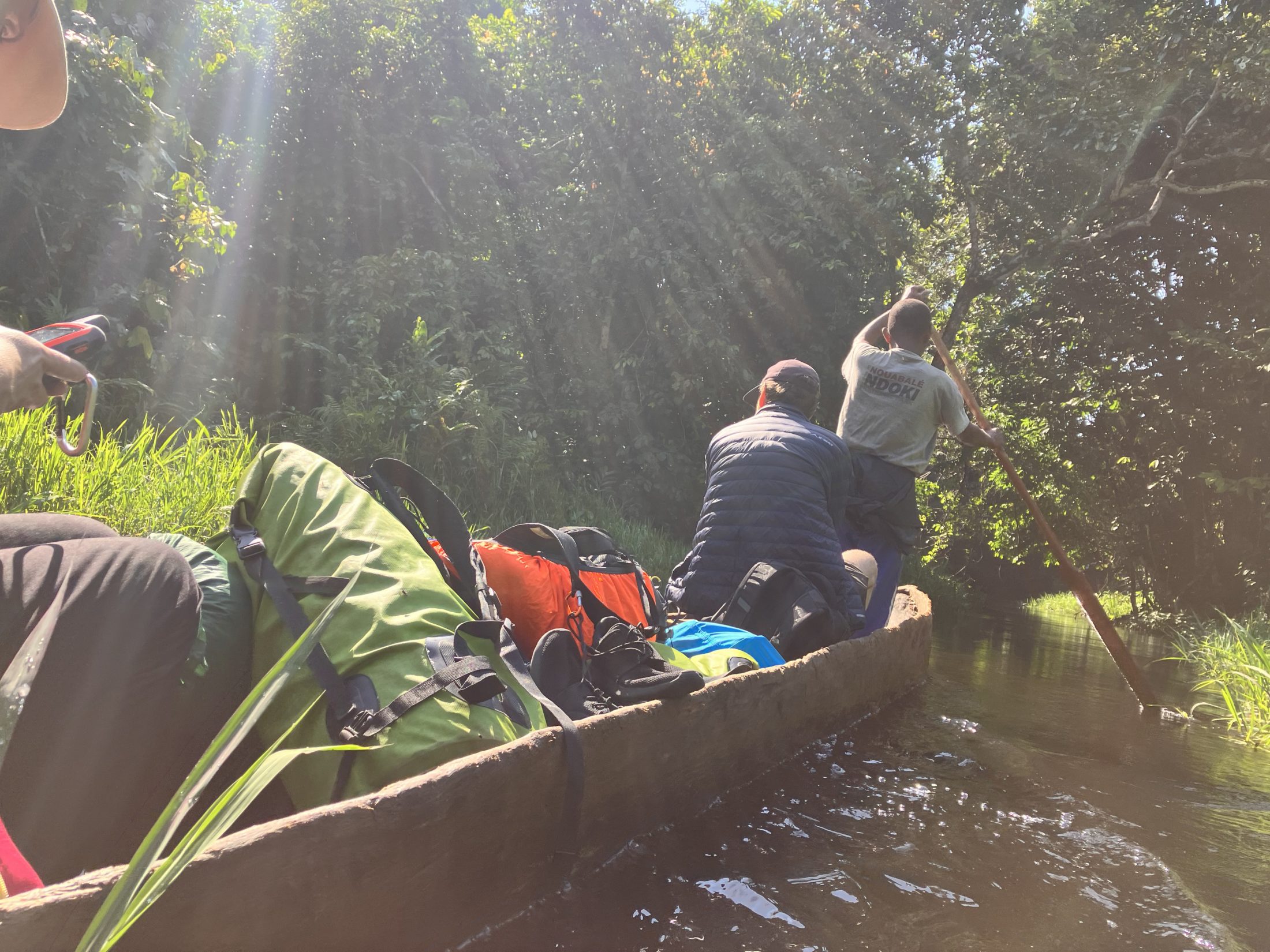
If Will’s trip has whet your appetite for deep, slow, frontier-like travel, please do get in touch, with either Will Jones or Kyle de Nobrega for a trip to Republic of Congo or the team in general — including Squack Evans and Hannah Rayner — for elsewhere.
All images © Will Jones.
